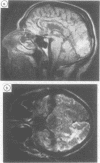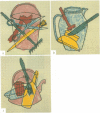Abstract
A single case study of a patient with visual associative agnosia is described. The patient had well preserved language, spatial, visual, and perceptual abilities but nevertheless was impaired in recognising visually presented common objects. It is argued that his deficit cannot be accounted for in terms of a disconnection syndrome. Behavioural and anatomical (MRI scan) evidence for focal unilateral dysfunction is presented. It is concluded that the left hemisphere plays a crucial role in recognising the meaning of common objects.
Full text
PDF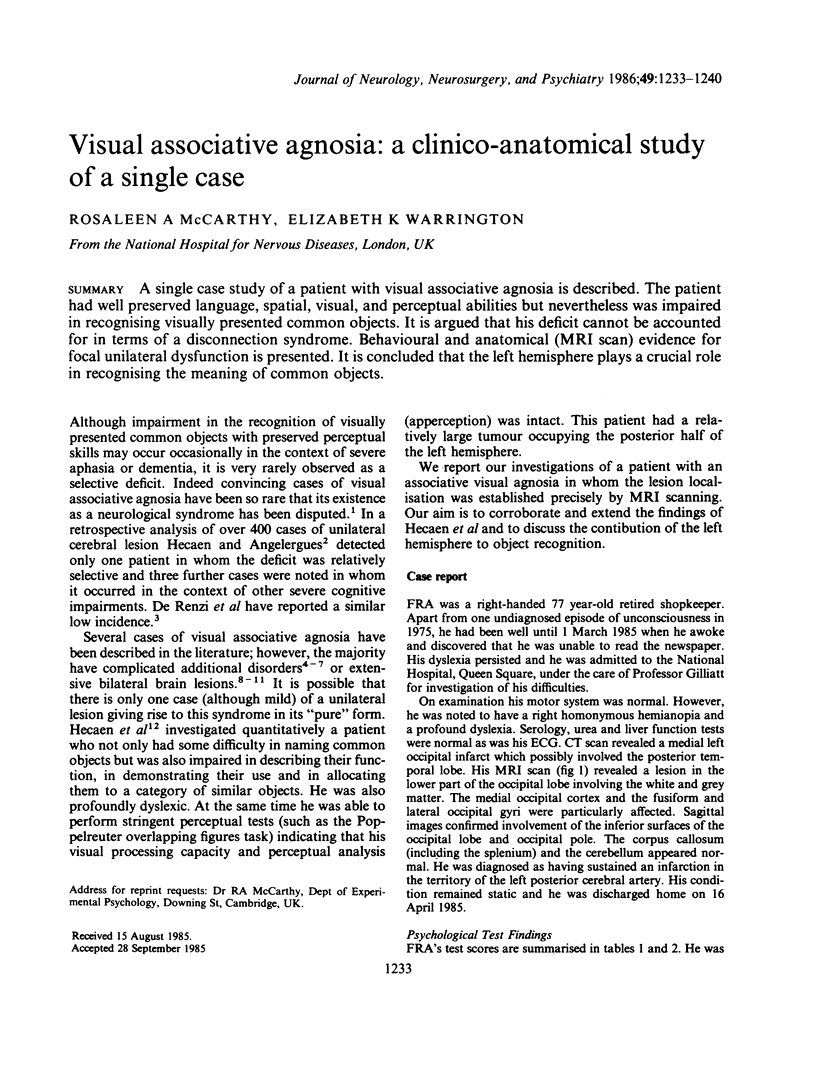
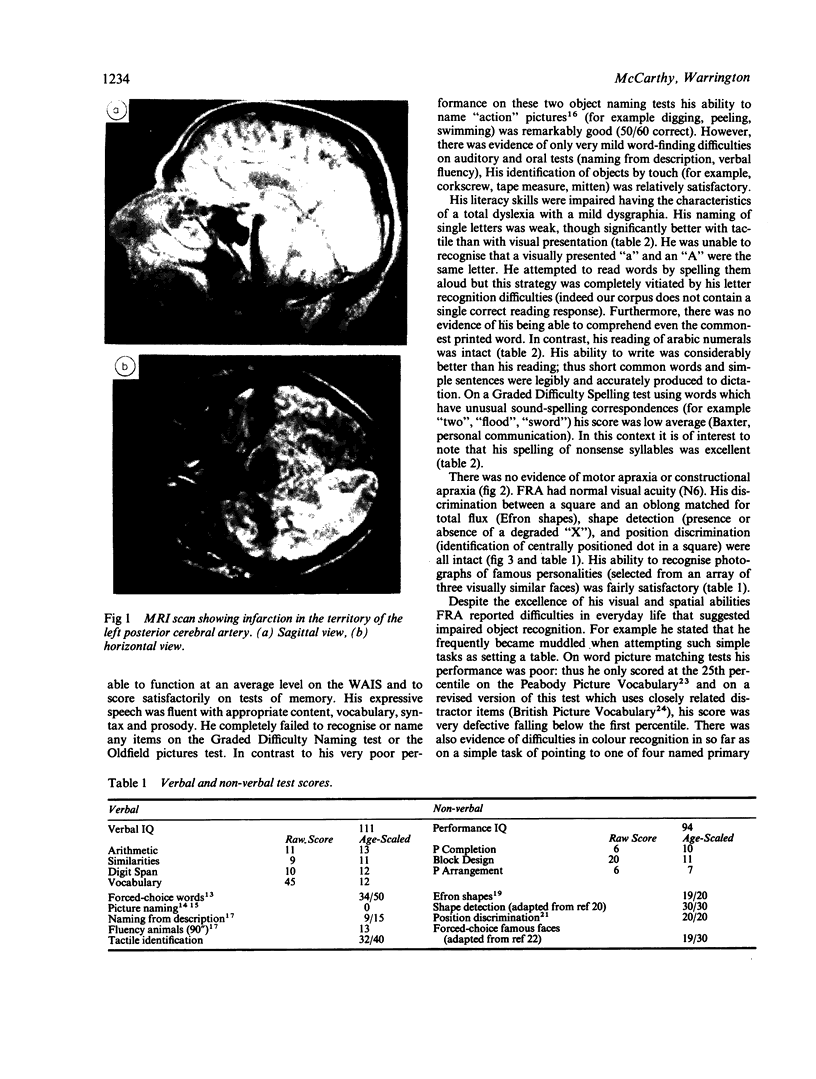
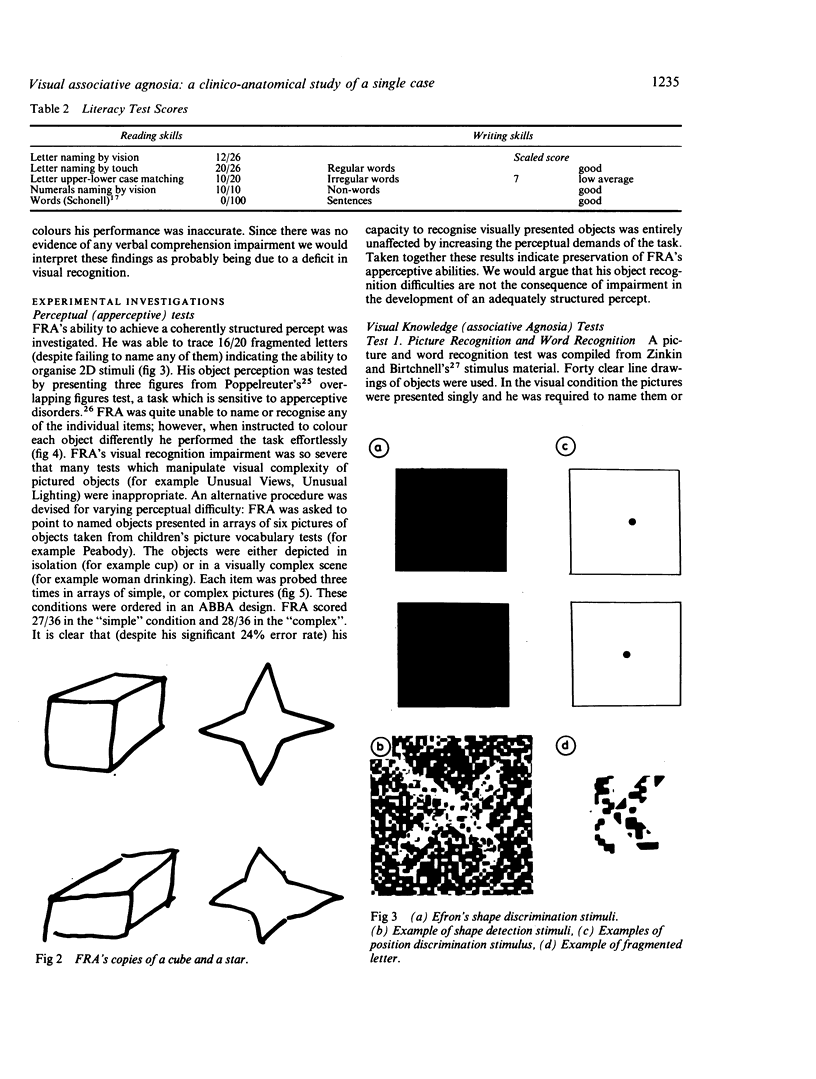
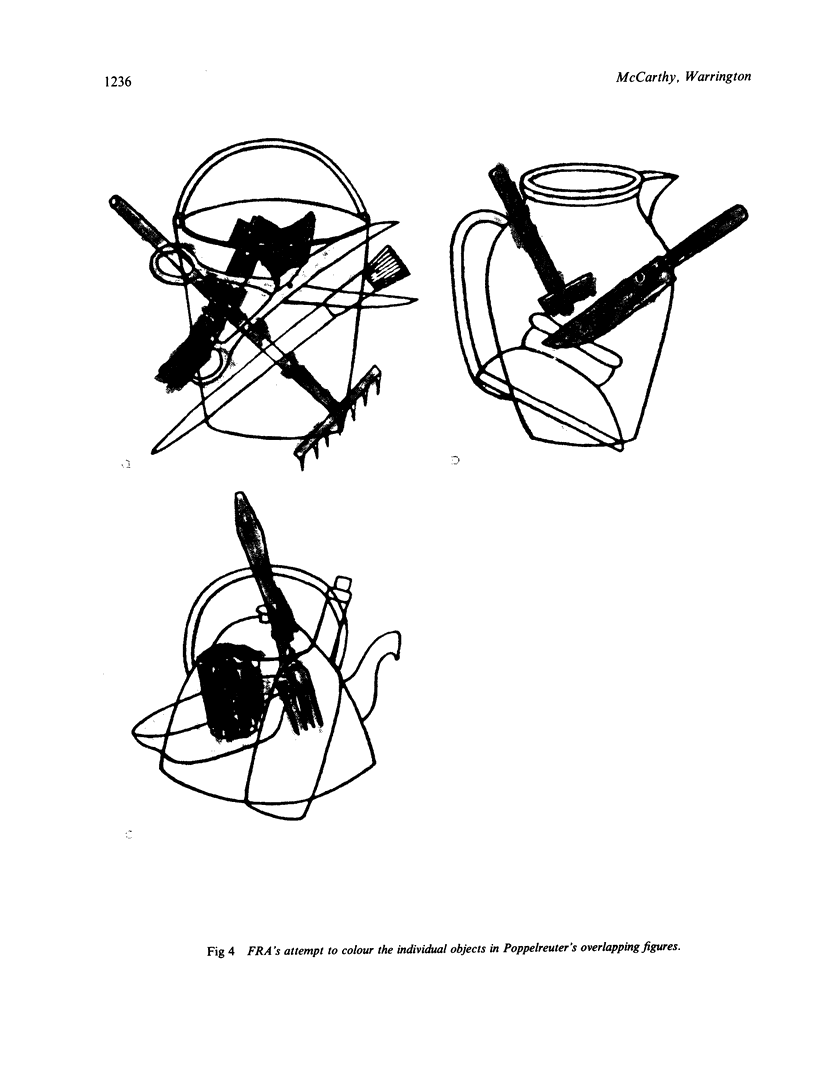
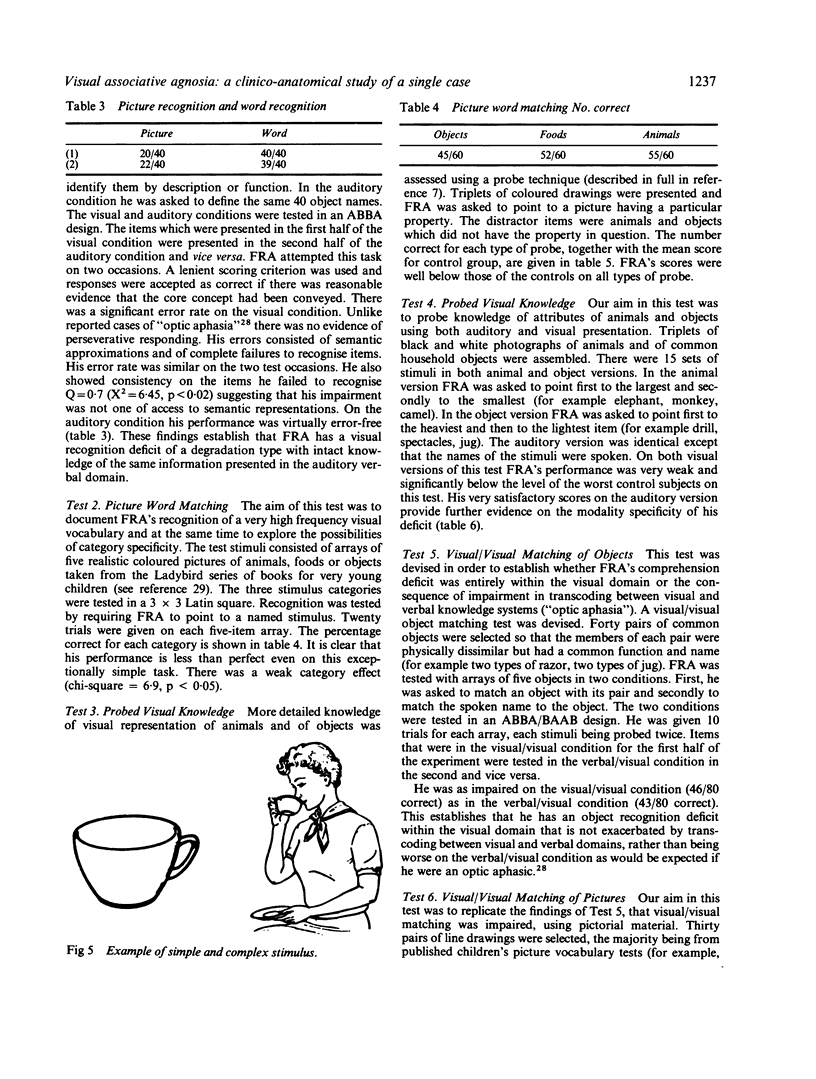
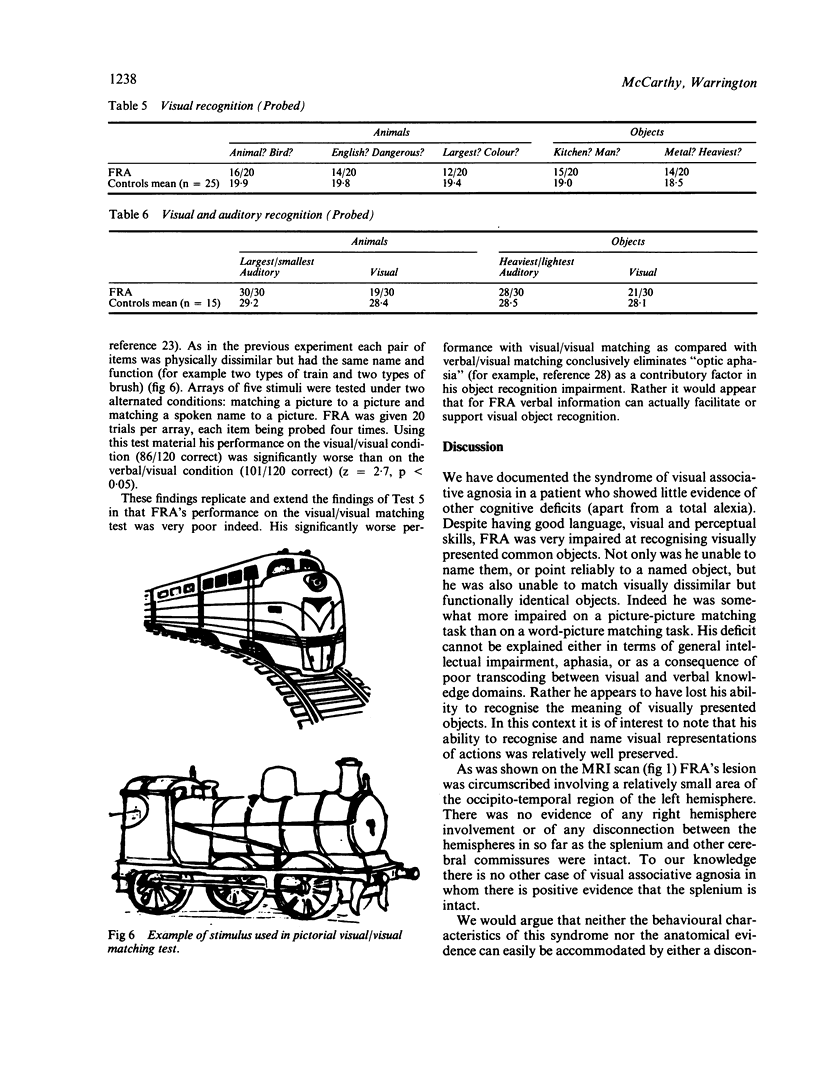
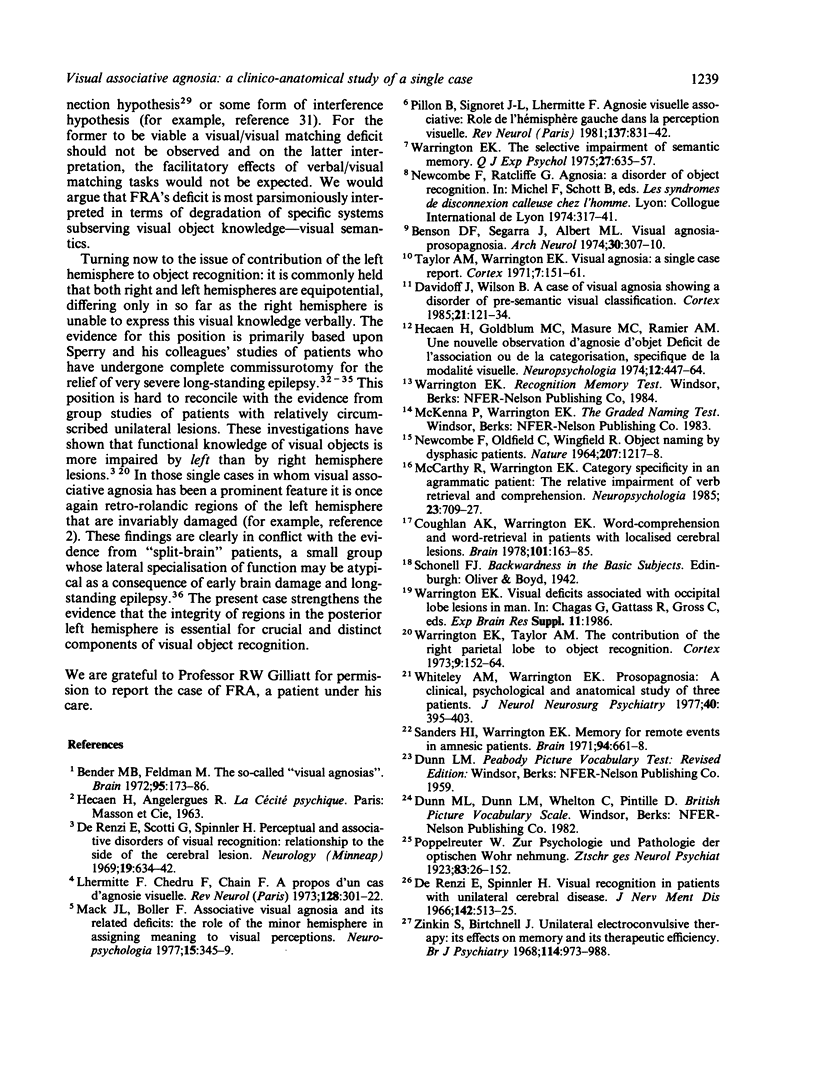
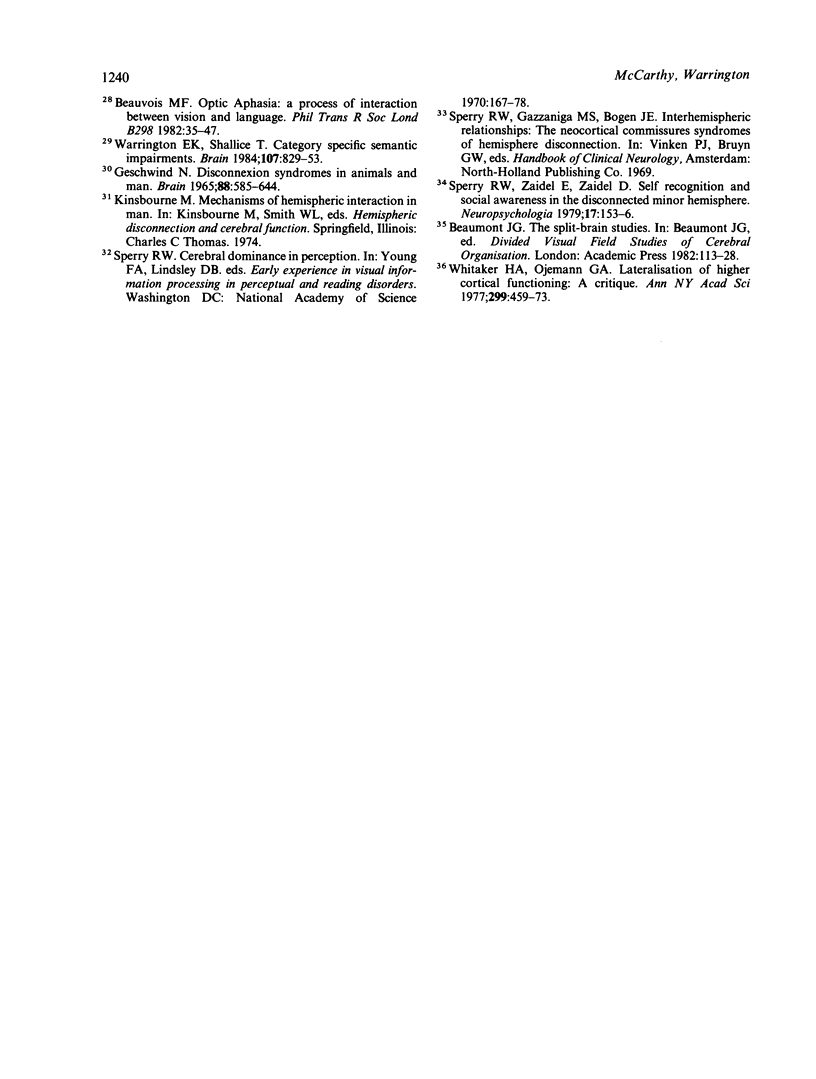
Images in this article
Selected References
These references are in PubMed. This may not be the complete list of references from this article.
- Beauvois M. F. Optic aphasia: a process of interaction between vision and language. Philos Trans R Soc Lond B Biol Sci. 1982 Jun 25;298(1089):35–47. doi: 10.1098/rstb.1982.0070. [DOI] [PubMed] [Google Scholar]
- Bender M. B., Feldman M. The so-called "visual agnosias". Brain. 1972;95(1):173–186. doi: 10.1093/brain/95.1.173. [DOI] [PubMed] [Google Scholar]
- Benson D. F., Segarra J., Albert M. L. Visual agnosia-prosopagnosia. A clinicopathologic correlation. Arch Neurol. 1974 Apr;30(4):307–310. doi: 10.1001/archneur.1974.00490340035007. [DOI] [PubMed] [Google Scholar]
- Coughlan A. K., Warrington E. K. Word-comprehension and word-retrieval in patients with localized cerebral lesions. Brain. 1978 Mar;101(1):163–185. doi: 10.1093/brain/101.1.163. [DOI] [PubMed] [Google Scholar]
- Davidoff J., Wilson B. A case of visual agnosia showing a disorder of pre-semantic visual classification. Cortex. 1985 Mar;21(1):121–134. doi: 10.1016/s0010-9452(85)80020-4. [DOI] [PubMed] [Google Scholar]
- De Renzi E., Scotti G., Spinnler H. Perceptual and associative disorders of visual recognition. Relationship to the side of the cerebral lesion. Neurology. 1969 Jul;19(7):634–642. doi: 10.1212/wnl.19.7.634. [DOI] [PubMed] [Google Scholar]
- Geschwind N. Disconnexion syndromes in animals and man. II. Brain. 1965 Sep;88(3):585–644. doi: 10.1093/brain/88.3.585. [DOI] [PubMed] [Google Scholar]
- Hécaen H., Goldblum M. C., Masure M. C., Ramier A. M. Une nouvelle observation d'agonsie d'objet. Deficit de l'association ou de la catégorisation, spécifique de la modalité visuelle? Neuropsychologia. 1974 Oct;12(4):447–464. doi: 10.1016/0028-3932(74)90075-x. [DOI] [PubMed] [Google Scholar]
- Lhermitte F., Chedru F., Chain F. A propos d'un cas d'agnosie visuelle. Rev Neurol (Paris) 1973 May;128(5):301–322. [PubMed] [Google Scholar]
- Mack J. L., Boller F. Associative visual agnosia and its related deficits: the role of the minor hemisphere in assigning meaning to visual perceptions. Neuropsychologia. 1977;15(2):345–349. doi: 10.1016/0028-3932(77)90044-6. [DOI] [PubMed] [Google Scholar]
- McCarthy R., Warrington E. K. Category specificity in an agrammatic patient: the relative impairment of verb retrieval and comprehension. Neuropsychologia. 1985;23(6):709–727. doi: 10.1016/0028-3932(85)90079-x. [DOI] [PubMed] [Google Scholar]
- Newcombe F. B., Oldfield R. C., Wingfield A. Object-naming by dysphasic patients. Nature. 1965 Sep 11;207(5002):1217–1218. doi: 10.1038/2071217a0. [DOI] [PubMed] [Google Scholar]
- Pillon B., Signoret J. L., Lhermitte F. Agnosie visuelle associative. Rôle de l'hémisphère gauche dans la perception visuelle. Rev Neurol (Paris) 1981;137(12):831–842. [PubMed] [Google Scholar]
- Sanders H. I., Warrington E. K. Memory for remote events in amnesic patients. Brain. 1971;94(4):661–668. doi: 10.1093/brain/94.4.661. [DOI] [PubMed] [Google Scholar]
- Sperry R. W., Zaidel E., Zaidel D. Self recognition and social awareness in the deconnected minor hemisphere. Neuropsychologia. 1979;17(2):153–166. doi: 10.1016/0028-3932(79)90006-x. [DOI] [PubMed] [Google Scholar]
- Warrington E. K., Shallice T. Category specific semantic impairments. Brain. 1984 Sep;107(Pt 3):829–854. doi: 10.1093/brain/107.3.829. [DOI] [PubMed] [Google Scholar]
- Warrington E. K., Taylor A. M. The contribution of the right parietal lobe to object recognition. Cortex. 1973 Jun;9(2):152–164. doi: 10.1016/s0010-9452(73)80024-3. [DOI] [PubMed] [Google Scholar]
- Warrington E. K. The selective impairment of semantic memory. Q J Exp Psychol. 1975 Nov;27(4):635–657. doi: 10.1080/14640747508400525. [DOI] [PubMed] [Google Scholar]
- Whitaker H. A., Ojemann G. A. Lateralization of higher cortical functions: a critique. Ann N Y Acad Sci. 1977 Sep 30;299:459–473. doi: 10.1111/j.1749-6632.1977.tb41929.x. [DOI] [PubMed] [Google Scholar]
- Whiteley A. M., Warrington E. K. Prosopagnosia: a clinical, psychological, and anatomical study of three patients. J Neurol Neurosurg Psychiatry. 1977 Apr;40(4):395–403. doi: 10.1136/jnnp.40.4.395. [DOI] [PMC free article] [PubMed] [Google Scholar]
- Zinkin S., Birtchnell J. Unilateral electroconvulsive therapy: its effects on memory and its therapeutic efficacy. Br J Psychiatry. 1968 Aug;114(513):973–988. doi: 10.1192/bjp.114.513.973. [DOI] [PubMed] [Google Scholar]



